Delayed Starts & Booster Mandates: A Mixed B-School Response To The ‘Omicron Semester’

Had it been a more typical semester, students at Rice University would have likely spent much of Saturday (January 22) inside, discussing business trends and issues with their instructor and a full room of classmates. That’s the way it was starting to look at the end of last fall, as the business school started returning to more pre-pandemic operations.
And it’s how Peter Rodriguez, dean of Rice’s Jones Graduate School of Business, feels it best fulfills its promise to its students.
“We believe, based on our experience, that the quality of the learning experience is much higher when you have the ability to dialogue about issues in business, especially those around leadership decisions and strategy. You can’t quite accomplish that in the same way online,” Rodriguez tells Poets&Quants.
“It’s also true that, over a long period of time, the connections amongst students are weaker if we can’t be in person. And that diminishes the experience.”


Peter Rodriguez
A FOCUS ON MANAGING, NOT CONTAINING, THE VIRUS
But January was anything but normal for Rice and business schools around the country – even by pandemic standards. Omicron, the latest variant of the Coronavirus, is magnitudes more contagious than Delta which was magnitudes more contagious than any other previous variant.
It hit business schools fast and hard, just as they were preparing to welcome students from around the country back to their campuses after winter break. Rice reverted back to remote learning for the first two weeks of the spring semester, before resuming in-person classes today (January 24.) The hope was to give omicron a chance to burn itself out while the school prepared to enter a new stage of Coronavirus response: One that focused more on management than on avoidance or containment.
“With the requirements we have in place now, we feel much more comfortable being able to ensure a safe campus,” Rodriguez says. “Therefore, we’re probably going to be a little bit more lenient about mask requirements and capacity constraints than we have been in the past … Based on what we see and based on the advice we’ve gotten from medical experts and the Texas Medical Center, we think the second half of February will look much more normal. We hope that by then we are back to doing more in-person activities and back to delivering classes in a way that we think works best.
“My gauge is that the university is ready, for the most part, to treat COVID more as a management issue and something we will live with rather than something we will try to avoid.”
THE OMICRON SEMESTER
Despite hopes that they’d be returning to pre-pandemic modes of operation, business schools this month are navigating a slippery return to campus in omicron’s explosive spread. Students are testing positive at a higher rate than any other time during the pandemic and sparking clustered breakouts on campuses.
Harvard University, for example, reported 970 new infections the first week of January, even before the full student population had reported back to campus. Its case count was 140 the first week after Thanksgiving. Duke University, home of the Fuqua School of Business, reported 714 positives and a 4.5% positivity rate its first week of testing while Northwestern University, home of the Kellogg School of Management, had 936 positives – nearly half of those were undergrad students (439) while another 351 were graduate students.
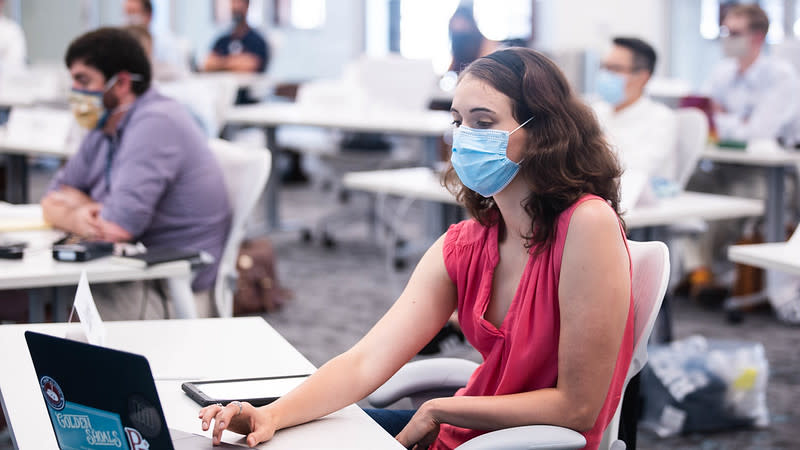
A student wears a surgical mask in a classroom at Rice University’s Jones Graduate School of Business. (Courtesy photo)
In response, business schools, following the lead of their home universities, responded in one of three ways: They delayed their spring start dates, moved instruction online temporarily, or charged ahead with in-person learning as scheduled, relying on ramped up testing and a re-commitment to masking indoors.
Last week, Poets&Quants examined the semester or quarter plans of the top 25 business schools to see how they were responding to the “omicron semester.” Most (but not all) now require vaccines and 19 require booster shots. Almost all require masks indoors. We found that four schools delayed their semester or quarter start dates while 19 moved instruction online for a set period of time. Seven schools resumed in-person instruction as scheduled. (See table below and on page 2).
One thing seems clear: Even as schools ramped up their responses for this omicron surge, there is a change coming in how schools deal with coronavirus: One focused more on management, rather than containment.
Next page: Delayed starts and online pivots in omicron response

Stanford Graduate School of Business MBA students distance themselves outside for a group lesson in this Stanford file photo. GSB students resumed in-person learning, with strict coronavirus protocols, on January 18.
DELAYED STARTS AND ONLINE PIVOTS
Poets&Quants identified three universities with top 25 business schools that delayed the start of classes by at least a week in order to give returning students ample time to test and isolate if needed: University of Chicago’s Booth School of Business delayed the start of its Winter Quarter by one week to January 10 while going virtual until today (January 24.) Booth also extended its round 2 MBA application by one week. Vanderbilt’s Owen Graduate School of Management, following the lead of the university, delayed the start of classes until January 18, but planned to return in-person. Yale’s School of Management delayed classes until January 25 and will be taught remotely through February 4.
Nineteen other schools started their terms as scheduled, but pivoted to online instruction.
Stanford University, as we previously reported, announced in December that it was moving instruction online for the first two weeks of the Winter Quarter beginning January 3. But, one week after students arrived on campus, nearly 400 students and 300 faculty and staff tested positive for coronavirus. The school delayed in-person classes by another week to January 24 for undergraduate students.
“We anticipate further increases in cases as more students arrive. While we have designated isolation spaces available currently, we expect our capacity to be strained in the coming days, particularly at the undergraduate level,” Provost Persis Drell and Associate Vice Provost Russell Furr wrote in a January 7 message to the Stanford community.
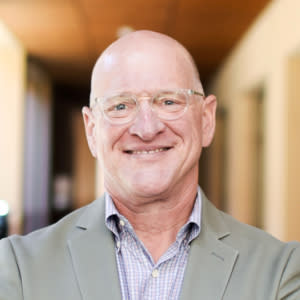

Bradford Williams
While Stanford Graduate School of Business follows the university’s coronavirus protocols, it resumed in-person classes last Tuesday (January 18). So far, the return has gone smoothly, Brandford Williams, director of communications and media relations at Stanford GSB tells Poets&Quants.
“Stanford health experts continue to believe there is low risk of in-class transmission, as long as individuals wear proper face coverings and students with symptoms do not attend. While COVID cases have increased in the local area, cases have typically been mild for those who are fully vaccinated and boosted,” Williams says. “We have advised students that a few classes may need to have a limited number of online sessions due to the instructor isolating, or if there is an unsustainable portion of the class in isolation.
“As we have throughout the pandemic, Stanford GSB follows Stanford University’s protocols, which are based on current guidance from local and regional public health officials. An important consideration for the University in its COVID policy planning is ICU capacity and general strain on the Stanford Hospital system. At this point, hospital capacity is not a cause for concern.”
AT WASHINGTON FOSTER, 1,000 NEW CASES AND 15% POSITIVITY RATE
The University of Washington, home of the Foster School of Business, announced last month that it would move to remote learning for the first week of Winter Quarter beginning January 3. But, at the end of that week, with campus positive cases nearing 1,000 and a positivity rate reaching 15%, the university decided on January 6 to extend the remote period through January 28.
“Community testing capacity was quickly becoming overwhelmed leading to increased demand for campus testing. Community testing positivity rates were approaching 30% at some sites,” Barbara Pearson, director of Foster’s MBA program operations, told P&Q in an email last week.

The University of Washington, home of the Foster School of Business, added an extra four days of online classes after surging omicron cases when students returned from winter break. (Courtesy photo)
Contact tracing was 24-48 hours behind schedule due to the volume, while the university’s quarantine and isolation space was approaching its limit. Meanwhile, University of Washington Medicine hospital case counts were at all-time pandemic high with more than 800 staff out due to COVID protocols and critical campus staff were calling in sick, Pearson said.
“The impact on faculty and staff has been a fair amount of extra work to manage a quick pivot of plans for instruction and work. Since we have operated remotely for long stretches over the past two years, this transition was not as challenging as in March 2020, but it does imply some additional work for many of our faculty and staff,” Pearson tells P&Q. “Most of our staff are working from home during this time and have set ups and work that allows them to create continuity in program operations. A few of our staff members have had to take time off due to illness, but most are healthy and are just continuing to work from home.”
No changes are planned for Foster’s Spring Quarter at this time.
Next page: A difference in this semester's move online
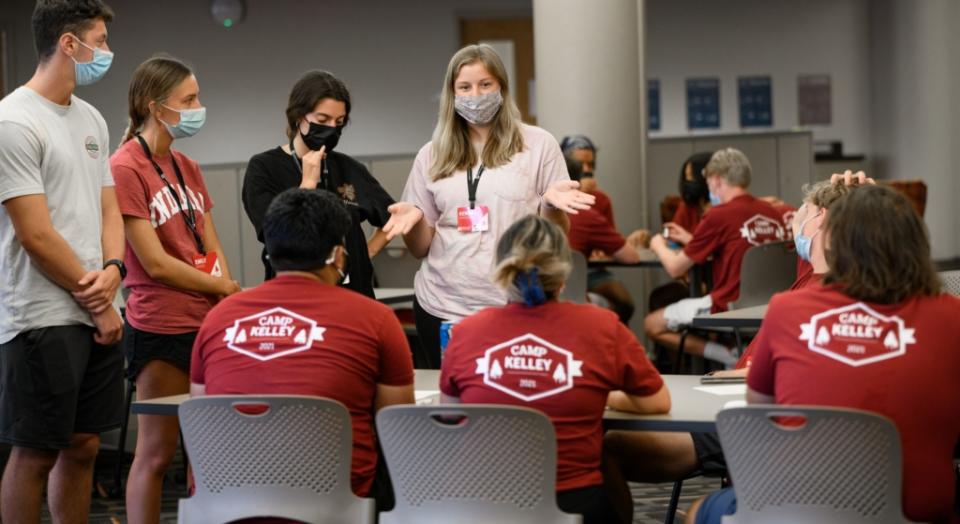
Students of the Kelley School of Business prepare for the Camp Kelley Case Competition. Kelley started the spring semester in-person as scheduled. (Courtesy photo)
A DIFFERENCE IN OMICRON’S ONLINE PIVOTS
In spring 2020, at the start of the pandemic, many schools abruptly switched to online instruction for the first time, often creating frameworks on the fly for classes. As cases fell over the summer, vaccines were introduced, and masks became more available and their effect against spread more understood, a lot of colleges and universities had returned to at least some form of in-person or hybrid learning by fall 2021. With the surge in omicron, many reverted back to online learning.
But the omicron pivot was different in at least two respects: First, schools had done it before, and both students and faculty knew what to expect. Second, the pivot came with end dates, emphasizing that virtual classes were temporary. The meteoric rise, and subsequent fall, of omicron cases has helped schools justify short-term shifts away from in-person learning to give the virus a chance to burn itself out after students’ return to campus.
“We’ve talked about flattening the curve in the past, and that’s so important right now with our health care infrastructure being so overwhelmed. If we can hold tight for a relatively short period of time while we get through the current surge, we hope that there will be a bit more flexibility a few weeks from now when the downstream social consequences of our individual actions are less dire,” Michael Klompas, professor of population medicine at Harvard Medical School and an infectious disease physician and hospital epidemiologist at Brigham and Women’s Hospital, told The Harvard Gazette on Jan. 12.
University and business school communities are, as a whole, younger, healthier and less likely to develop a serious case of COVID than the population at large. Most students are also vaccinated, with many colleges reporting vaccination and even booster rates in the high 90s. These factors make the online pivots easier to sell to students and staff. They give omicron the chance to slow down in surrounding communities, while protecting a commitment to in-person learning for the remainder of the term.
At Kellogg School of Management, which mirrors protocols at Northwestern University, students began the semester online on January 3, observing a short, defined two-week long modified quarantine called "Wildcat Wellness" to allow for enhanced testing, Senior Communication Coordinator Haley Robinson tells P&Q. Students returned to in-person classes on January 18.
The two-week online period appears to have worked in curbing the volume of new cases. According to Northwestern’s COVID-19 dashboard, new case counts dropped significantly after reporting 936 new cases the week of December 31-January 6. The next week, new cases fell by more than half to 482 and to 229 new positives between January 14-20. See chart below.
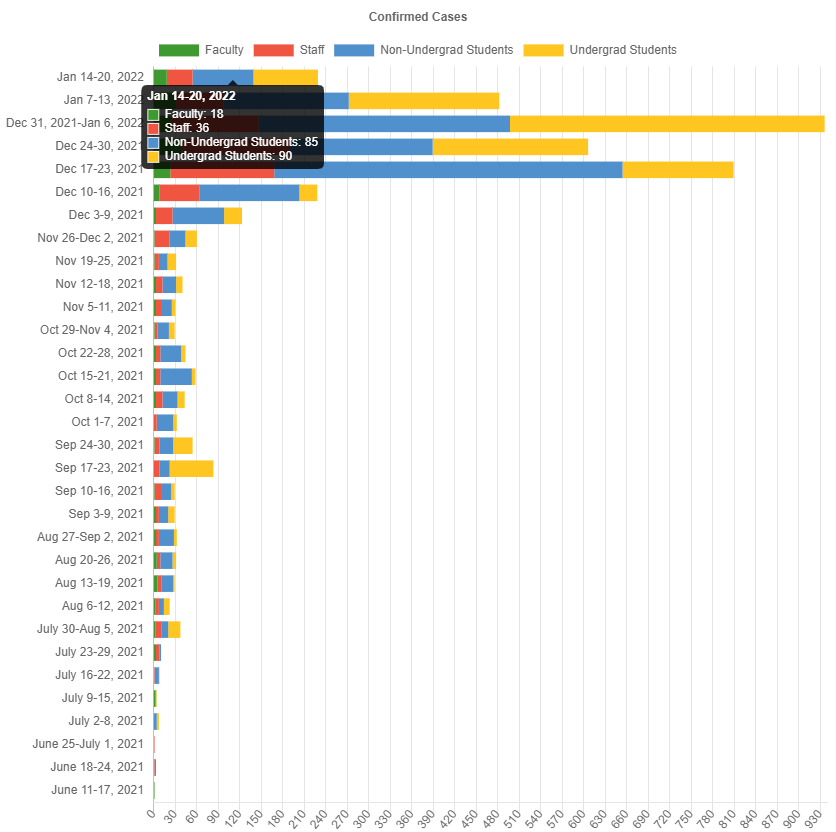
A screenshot of Northwestern University's coronavirus cases from the school's COVID-19 dashboard. Notice the sharp rise, but falling, in new cases beginning mid-December.
Next page: Forging ahead in-person + A new approach to coronavirus
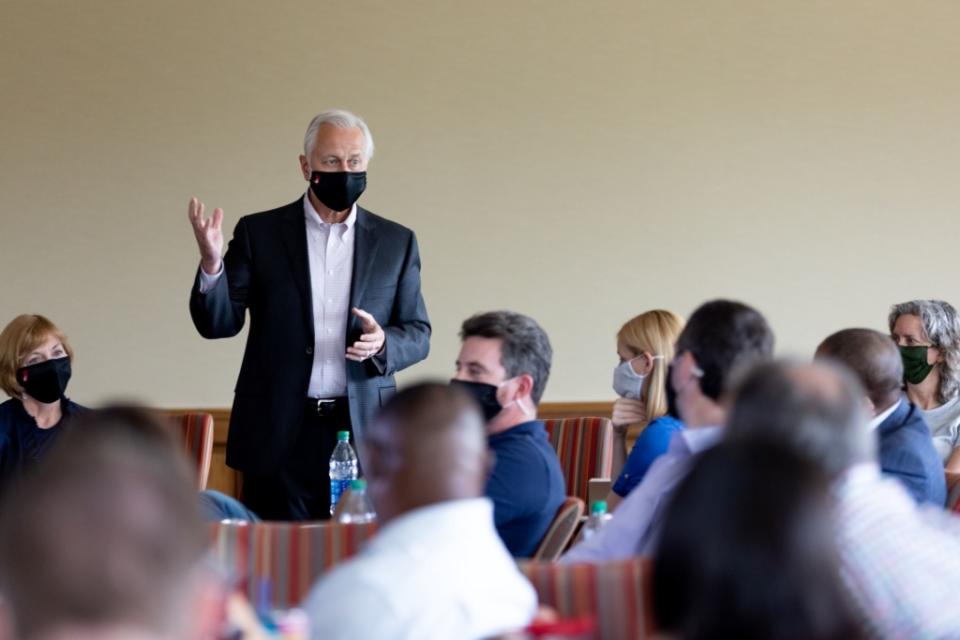
Students of the Kelley School of Business accounting department at a retreat. Kelley started the spring semester in-person as scheduled. (Courtesy photo)
FORGING AHEAD IN-PERSON
Seven schools in our analysis neither delayed their start dates nor switched to online learning. Indiana University, home of the Kelley School of Business, announced in mid-December that it would forge ahead with in-person instruction, research, and other activities. Classes began as scheduled on January 10.
“While cases are up right now with the current surge Indiana and the nation are experiencing, we feel confident our policies will allow us to continue in-person instruction this semester throughout IU. In large part that is because of our vaccination requirement, which right now has resulted in a 95% vaccination rate among students, faculty, and staff on the Bloomington campus,” Chuck Carney, IU director of media relations, tells Poets&Quants.
“Because of that vaccination rate, we don’t expect we would have to pivot to online again, but there is no one particular thing that would trigger such a move. In any case, we would consider a variety of things before making such a decision, but consider that quite unlikely given that our campuses are generally safer than the rest of the state given the vaccination rate. We have virtually no evidence that classroom transmission has been an issue, so moving to online would not necessarily offer more safety.”
While IU, and thus Kelley, does not require COVID booster shots, it does offer a $20 credit on its Crimson Card for any student who uploads proof of receiving a booster. It also requires masks indoors. On its COVID-19 FAQ site, the schools that all IU campuses are returning to pre-pandemic activities in most cases. “We understand many of our students want that traditional college experience -- in-person classes, seeing their friends on and around campus, going to athletic and other events, and simply being part of the IU community.”
A NEW PHASE IN COVID RESPONSE: MANAGEMENT
Like Rice Jones, other schools are also looking beyond this omicron pause to life with coronavirus on their campuses. Now, with vaccines and boosters that are highly effective at preventing serious disease, more administrators, students, and faculty are looking at the balance between the traditional in-person experience and trying to avoid illness (which is often mild in college-age students) at all costs.

Emory University's Goizueta Business School begain the spring semester with online learning. When it returns to in-person on January 31, it plans to begin a new phase of COVID-19 management. Emory photo
Take Emory University and Goizueta Business School. “As we prepare for the return on January 31, we know that our community is at an inflection point in the pandemic. Given what we have learned from omicron, along with the effective vaccine interventions already in place, Emory will move into its next phase of COVID-19 response,” Amir St. Clair, Emory associate vice president and executive director for COVID-19 response and recovery, wrote in a statement to P&Q.
That means the school will do what it can to prevent infection – indoor masking, shifting to a self-service model for contract tracing, and requiring vaccines and boosters for all in the community. But it will also default to face-to-face classrooms and other research and activities essential to the university experience.
The school reports that 98% of its students and 97% of staff are vaccinated. While they reported 131 new students and 73 staff have tested positive for COVID-19 in the last 10 days, it is, a sharp decline from the previous week. (See chart below showing the 7-day-moving average of new COVID-19 cases for students and faculty/staff. Note the sharp decline from the high on January 11.)

Emory University's 7-day rolling average of new COVID cases, from its COVD-19 dashboard.
“We remain focused on our objectives of limiting transmission, reducing severity of illness, protecting the most vulnerable, and promoting a vibrant campus experience,” Amir St. Clair tells P&Q.
“At the same time, we know our COVID-19 strategy must evolve to better respond to the most immediate needs, while also advancing our academic and research mission. Thus, Emory will begin taking important steps to shift our protocols and minimize future COVID-19 disruptions by empowering more personal accountability.”
DON’T MISS: ALL THE MAJOR STEM PROGRAMS AT U.S. BUSINESS SCHOOLS and STANFORD GSB GRADUATED THE HIGHEST-PAID MBAS OF ALL TIME IN 2021
The post Delayed Starts & Booster Mandates: A Mixed B-School Response To The ‘Omicron Semester’ appeared first on Poets&Quants.
